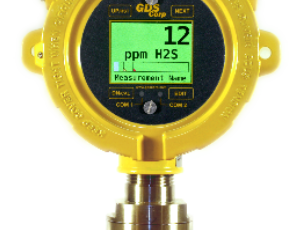One of the common threats faced in the oil and gas industry is the presence of hydrogen sulfide, or sour gas (H2S). This gas can become toxic or fatal even at low concentrations and is also heavier than air, resulting in the potential for hydrogen sulfide to form discrete regions where the concentration is potentially harmful or fatal to workers and visitors alike. In addition, while this gas is commonly associated with the smell of rotten eggs, high concentrations can destroy the sense of smell, leaving the victim unaware of his or her danger. In addition, hydrogen sulfide can be immediately lethal in high concentrations, even in the face of prompt medical treatment.
For these reasons, it is vital to maintain an effective network of hydrogen sulfide detectors in all areas where this gas may pose a threat. In addition, it is important to ensure that all deployed H2S sensors are operating properly. The following three events can be a warning that a hydrogen sulfide detector has either failed or is in the process of failing. By noting these events, the company can take corrective action before tragedy strikes.
False Positives Can be a Warning Sign
When a sensor starts giving a high number of false positives, it could be a sign that the mechanism itself is about to fail. This can be especially dangerous because the common response to a false positive is to determine that the alert is in error, while failing to check the sensor itself for a potential malfunction. Because false positives could be a precursor to a general sensor failure, it is important that any sensor giving off false positives be immediately checked for a mechanical or software malfunction.
Inconsistent Results
When an H2S detector is giving wildly inconsistent results when compared to other detectors on the site, it is very likely that the detector is starting to malfunction. Networked detectors should be monitored in order to compare every hydrogen sulfide detector to the results of other detectors, and any discrepancies should be immediately investigated. If the discrepancy remains after the detector has been replaced or repaired, the fault may lie with the monitoring network, employee error, or the placement of the detector itself.
Poor Placement
Not all H2S detector failures are mechanical or electronic in nature. In many cases, a detector may fail because of poor placement, such as being put in an area where the airflow works to disperse any H2S concentrations. An H2S sensor should always be placed in areas that conform to the vendor’s instructions regarding hydrogen sulfide sensor placement. In addition, detector issues due to poor placement may indicate a need to install a larger number of detectors in order to ensure adequate coverage of the facility.
Ultimately, having a working network of hydrogen sulfide detectors is a vital part of maintaining a safe workplace. By being proactive in determining the cause of any malfunctions, the company can improve workplace safety while reducing the costs associated with any workplace accidents that occur due to malfunctioning H2S sensors.

